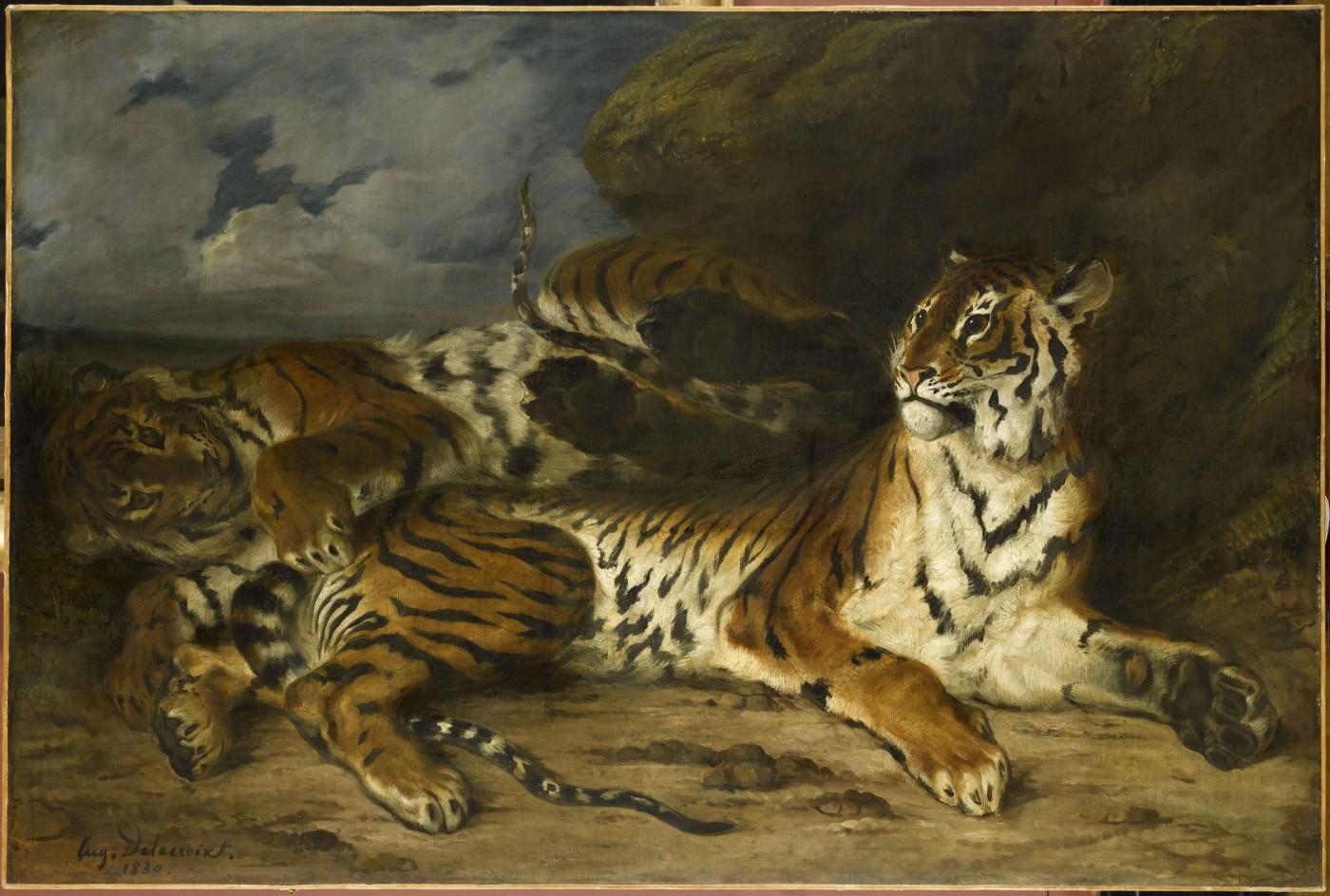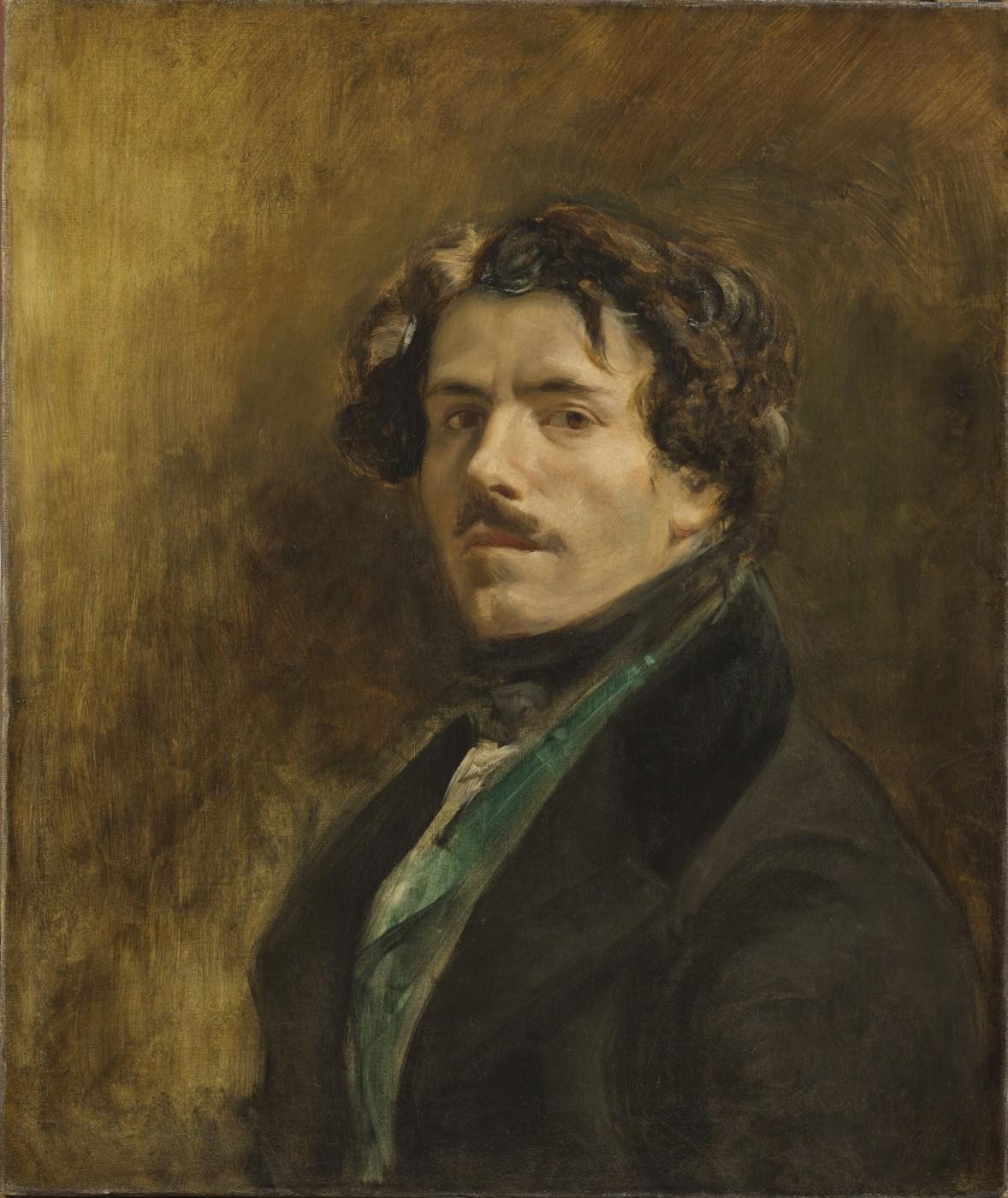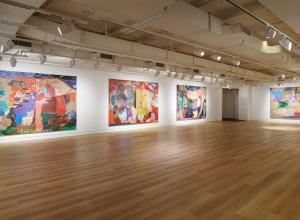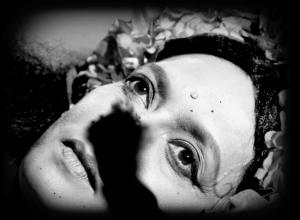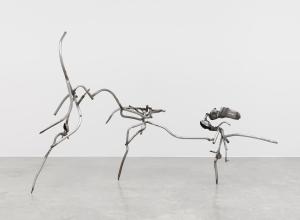For the first time ever in the United States, a representative selection of notebooks that made up Delacroix’s handwritten Journal will be displayed, on loan from the leading repository of the artist’s writings, the Institut National d’Histoire de l’Art, Paris. From schoolboy musings to mature reflections on the nature of beauty, these manuscripts reveal one of the great painter-writers in the history of art, particularly in accounts of his early career, from 1822 to 1824, and again beginning in 1847.
The presentation then moves to a close examination of Delacroix’s progressive mastery of materials in the 1820s—including oil paint, pencil, pen and ink, and watercolor—as he underwent formal artistic training under the prominent Neoclassical painter Pierre Narcisse Guérin. Of critical importance during this time were Delacroix’s breakthroughs in rendering the textures, hues, and luminosity of human skin, as seen in his studies of Mademoiselle Rose (ca. 1820–23) and the multiracial model Aspasie (ca. 1824). His focus on the human form, exotic objects, and copies after old masters will round out this gallery’s display.
Delacroix had a lifelong fascination with animal physiognomy as a window onto human states of mind. Beginning in 1828, he studied animals at the menagerie in Paris’s Jardin des Plantes, an important center of scientific inquiry. The exhibition will provide a nimble, intimate account of Delacroix’s approach to wild cats, horses, and humans as he worked across media. The centerpiece will be Young Tiger Playing with its Mother (1830), Delacroix’s masterwork in the genre. The violence implicit in these works will be amplified in the next gallery, devoted to scenes of war and violence. While some of these works are inspired by the poems of Lord Byron and contemporary novels, others are based on historical events. Highlights will include The Murder of the Bishop of Liège (1829), The Death of Sardanapalus (the large oil sketch of 1826–27 and the 1845–46 version) and the immersive, nearly 12-foot-wide Battle of Nancy (1831).
By the mid-1820s, Delacroix’s growing renown led to offers to contribute illustrations to important literary publications. His inventiveness as a printmaker will be evident in 17 lithographs he produced for an 1828 French edition of Johann Wolfgang von Goethe’s Faust. This recently identified set, in the collection of the Petit Palais, Paris, since 1902, has never previously been exhibited in its entirety. It consists of proof impressions with lively sketches in the margins that were later effaced when the illustrations were printed for publication. These will be displayed alongside preparatory drawings and a bound copy of the final book to reveal the extent of Delacroix’s working process.
In 1832, on the heels of the French invasion of Algeria, Delacroix accompanied a diplomatic mission to neighboring Morocco. Having never traveled to Italy to experience the remnants of classical antiquity firsthand—a requisite trip for most artists—Delacroix was captivated by what he understood as the “living antiquity” he encountered in North Africa. He drew numerous portraits of the people he met, including the never-before-exhibited Jewish Woman of Tangier and Schmareck, Tanner at Tangier (both 1832). He submitted three paintings based on this journey to the Salon of 1834: Street in Meknes (1832), Women of Algiers in Their Apartment (1834), and Collision of Arab Horsemen (1833/34). The jury, however, rejected the last painting, and thus The Met’s exhibition will be the first time that these three works will be shown together, as the artist intended.
Following his return from Morocco, Delacroix received official commissions to execute major decorative projects in prestigious public spaces. This activity infused a new sense of gravitas in his work and led him to produce large-scale paintings. Depicting an episode from Greek mythology, Medea about to Kill Her Children (1838) is a meditation on the abandonment of reason, while Saint Sebastian Tended by the Holy Women (1836) represents its opposite: the tender and compassionate treatment of a Roman martyr. The pairing in this exhibition of these two colossal, thematically related masterworks highlights a key, if not widely recognized, highpoint of Delacroix’s long career.
As Delacroix diversified his output from the 1840s onward, he embraced still lifes, floral compositions, and scenes from Renaissance literature. The artist’s signature coloristic brilliance will be evident in the seminal still life Basket of Flowers (1848–49), which underwent a yearlong treatment in The Met’s Department of Paintings Conservation to remove a disfiguring layer of old varnish. Nearby will be two vibrant oil sketches for Apollo Slays the Python (both ca. 1850), executed in preparation for the ceiling of the Louvre’s Gallery of Apollo. The exuberance of these paintings will stand in sharp contrast to the somber palette employed in paintings of Christ’s Passion and Crucifixion and of Christ’s mourners displayed in an adjacent gallery.
A major development in Delacroix’s later work was the increased role of landscape and seascape in his artistic vision, as seen in The Shipwreck of Don Juan (1840), The Sea at Dieppe (1852), and an ensemble of studies related to his final large-scale mural project, Jacob Wrestling the Angel (1850), at the Parisian church of Saint-Sulpice. The exhibition will conclude with The Lion Hunt (1855), painted for Delacroix’s triumphant retrospective at the Exposition Universelle of 1855. The Lion Hunt, which survives as a massive fragment after its upper section was destroyed in a fire in 1870, conveys Delacroix’s lifelong preoccupation with Rubens, Orientalist subjects, battles, and animals—that is, with mining the past on his own terms and investing it with new life. On this final note, exhibition visitors will come away with a broadened appreciation for Delacroix’s remarkable oeuvre and its enduring appeal.




